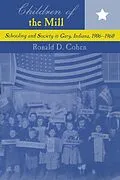Gary, Indiana was founded in 1906, and was part of the US Steel Corporation's plan to build the world's largest steel mill. The city's school system became world-famous as a progressive educational experiment until the 1930s when a changing political and economic climate led to an erosion of the system, which faced a serious overcrowding crisis in the 1950s. Blending social and intellectual history, Ronald Cohen examines the economic, political, and cultural context of the unique educational experience developed in this urban industrial center. Cohen demonstrates that while various interest groups - local as well as national - helped mold educational policies and practices, the Gary schools operated within the framework of corporate capitalism. Despite their early experimental nature, the Gary schools exemplified the rise of mass education in a multi-racial, multi-ethnic, class structure and urban setting.
Autorentext
Ronald D. Cohen is Professor of History at Indiana University Northwest. He is the author of Moonlight inDuneland: The Illustrated Story of the Chicago SouthShore and South Bend Railroad and Rainbow Quest: The FolkMusic Revival and American Society, 1940-1970.
Zusammenfassung
First published in 2002. Routledge is an imprint of Taylor & Francis, an informa company.
Inhalt
Preface I. Establishing the System, 1906-1910 II. In the Schools, 1910-1915 III. Time of Troubles, 1915-1920 IV. Flush Times, 1920-1930 V. Survival, 1930-1940 VI. The War Years, 1940-1945 VII. Postwar Problems, 1945-1950 Continuity and Change, 1950-1960 Afterword A Note on Sources Notes Index
